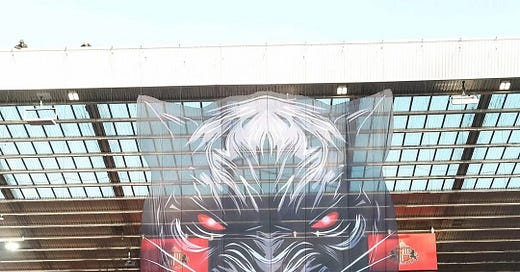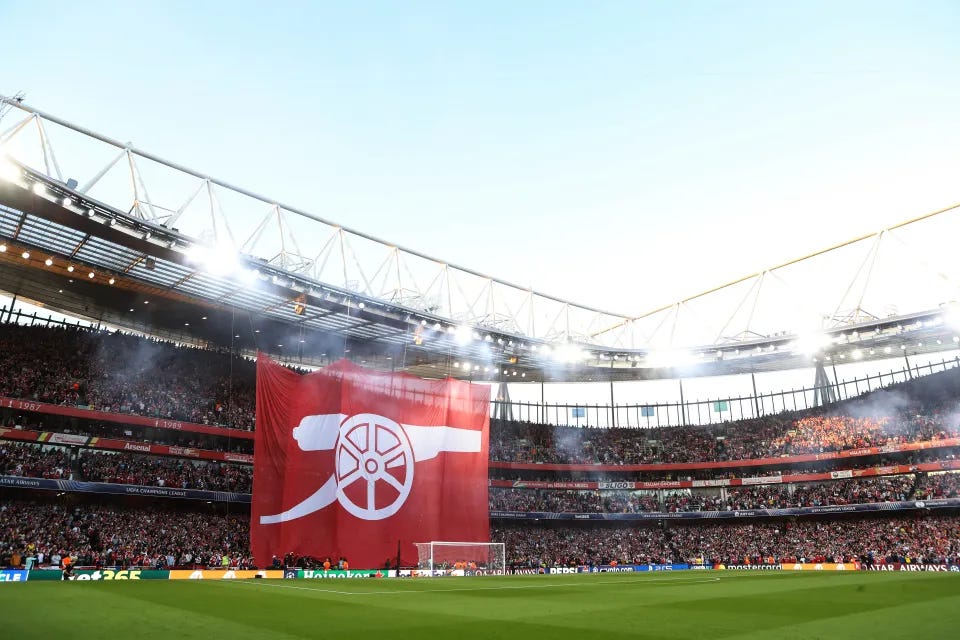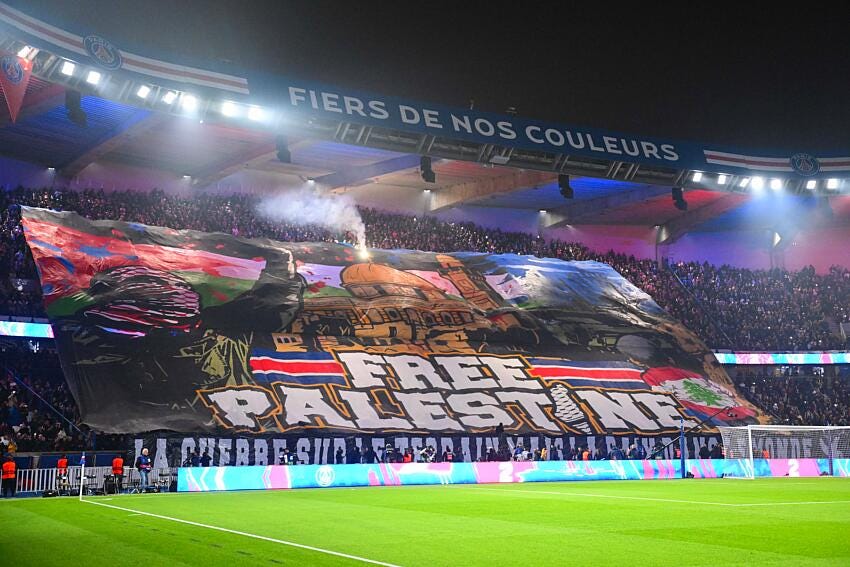Controlled spaces and English football's tifos - is the beginning of the end already here?
Commercial pressures and public sensitivities look set to moderate tifo culture
During English football club Sunderland’s recent Championship play-off game, fans hoisted a huge tifo (shown above) to mark the game’s significance.
Over recent seasons, more and more fans of English football clubs have been creating their own tifos, which parallels a long tradition among fans elsewhere in Europe especially in Italy from where the word originates.
Such is the established tifo culture in Europe that rankings of them even exist, though it seems unlikely that a recent Arsenal tifo will be appearing in any of them.
The tifo below was created upon the club’s instructions for use ahead of the English Premier League club’s UEFA Champions League game against Paris Saint Germain.
The Arsenal tifo was criticised by home supporters and mocked by visiting fans, unsurprising given the latter’s often striking and strident tifos.
Earlier this season, PSG fans displayed the tifo below.
Such was the sterile nature of Arsenal’s tifo, that the BBC even asked why the English are so bad at producing tifos.
Some observers argue the historic pervasiveness of hooliganism in English football gave rise to violence and hyper-masculinity as a means through which to express identity, rather than through the use of banners and flares seen in places such as Italy.
In both cases, identity, territory, family and community appear to be at the heart of both existing tifo culture and England’s new found love for paintings, flags, paper sheets, and pyrotechnics.
Given widespread debate about diversity, immigration and identity in Britain and elsewhere, this could be one reason why tifos are becoming so popular.
At the same time, tifos allow freedom of expression, amid concerns among some about speaking out or being cancelled if their views are publicly expressed in other ways.
Those viewing tifo developments through a commercial lens claim the practice is enhancing the fan experience, enabling people to co-create match day atmosphere.
But on whose terms?
The criticism of Arsenal’s tifo appears to have originated from the club’s objection to fan designed and funded banners.
Such clubs are multinational businesses, appearing on screens in multiple territories around the world, partly funded corporate partners vigilant to the reputational damage that may be caused to them by what fans display inside stadiums.
At the same time, clubs, tournament organisers, and event owners are normally keen to ensure that everything inside a venue is safe, ‘on brand’ and consistent with what they are otherwise trying to project.
It’s hard to imagine the type of political messaging evident on PSG tifos being permitted inside an English Premier League stadium, regardless of what the messaging might be.
The controlled spaces of 21st century football in England don’t sit easily alongside the ongoing need for people to freely express their identities or their opinions, especially if others see them as being controversial.
Which is one reason why English football’s romance with tifos may already be doomed to end.
Footnote
The images appearing in this article were sourced from:
https://x.com/FootballTalkHQ/status/1922603688813592638/photo/1
https://www.reddit.com/r/Fauxmoi/comments/1glku57/paris_saintgermain_fans_with_a_free_palestine/






